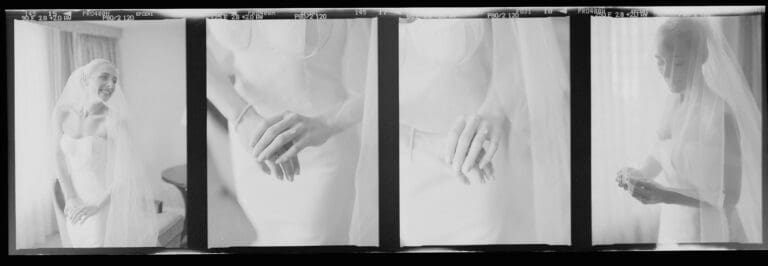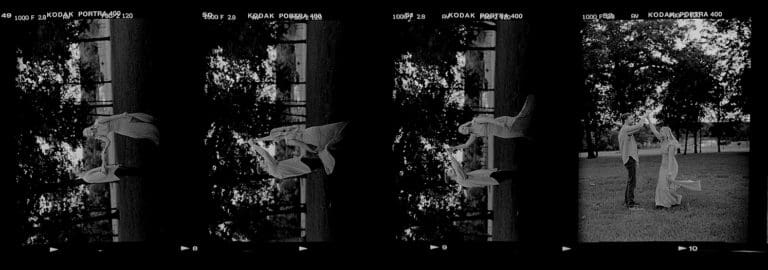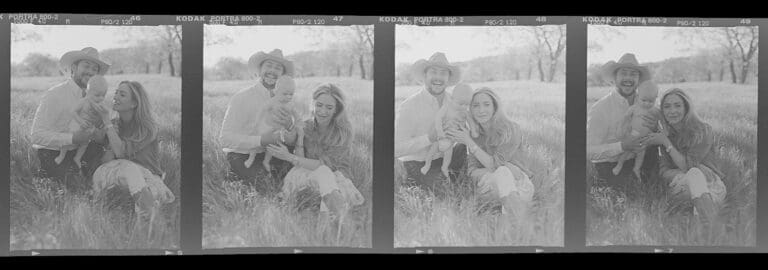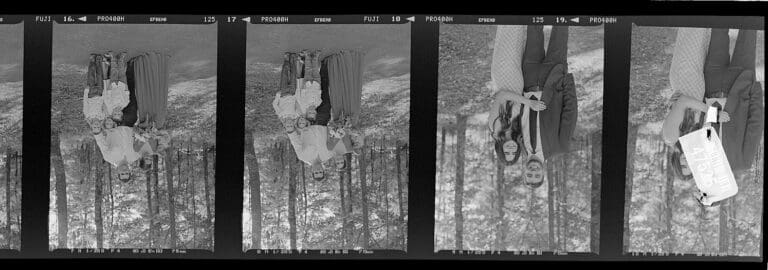Our Exposure Reference Sheets are the feedback you’ve been waiting for, right in your inbox. They clearly show your exposures for each and every frame. But did you know you can also use them to identify camera issues?
Below are some of the common camera issues we see at PhotoVision—and how you can learn to identify them using your Exposure Reference Sheets.
Light Leaks

Notice the white markings across the top and bottom of the film? These are due to a light leak. If you have light leaks, your camera needs to be serviced.
Opened Camera Back

The section of white seen here is overexposure caused by the back of your camera being opened mid-roll.
Sticky Shutter

Take a close look down the right side of each frame, notice how dark it is? This is caused by a shutter sticking when it opens/closes. If it continues, your camera needs to be serviced.
Base Fog


When identifying base fog, you want to pay attention to the density of the spacing in between each frame. When a roll is affected by base fog, this spacing becomes a light gray as opposed to a dark black. You also want to note the contrast level within each frame—when a roll is base fogged, every frame will appear very flat with little contrast.
Film Wound Too Far When Loaded


All that unexposed space before the first frame is a sure sign this roll of film was wound too far upon loading (e.g. for medium format, it was wound past the word “start”).
When your film is wound too far, your final frame will land at the physical end of the roll, which is a designated space for film processing + scanning. This space is used for clipping your film and for roll numbering. When a frame lands here, it can become distorted due to these processing needs.
Film Advance Issues

When evaluating the spacing in between each frame, you want them to be consistent. Notice how this roll has uneven spacing from frame to frame? This is a red flag that your camera has advancement issues. If the spacing is just slightly off, that is A-OK. But if the spacing begins to increase, your camera needs to be serviced.
Photos by Jacque Lynn Photography , Be Light Photography , Anna Peters , Kristen Kilpatrick , Courtney Leigh Photo.